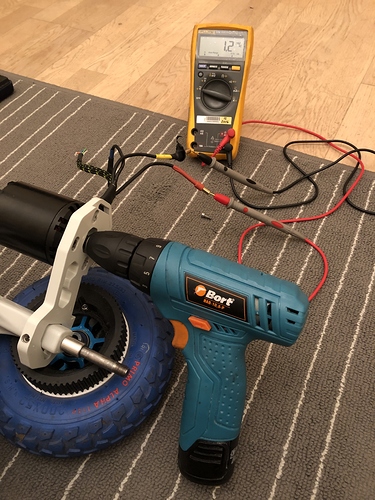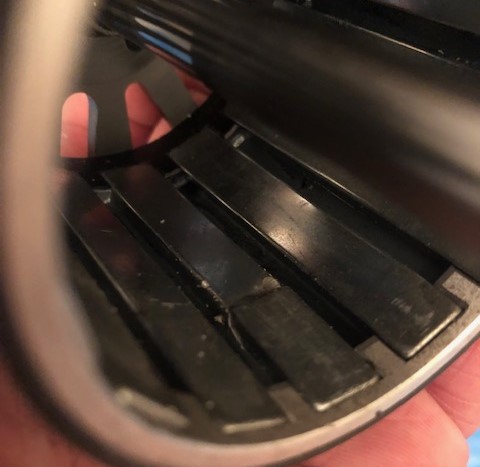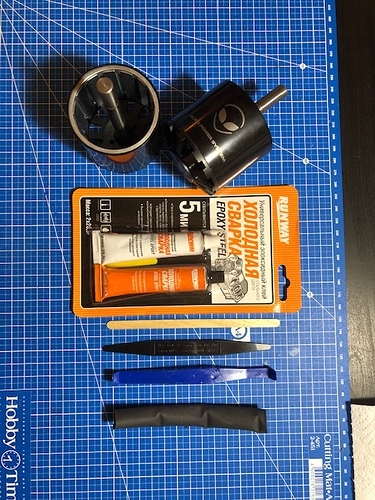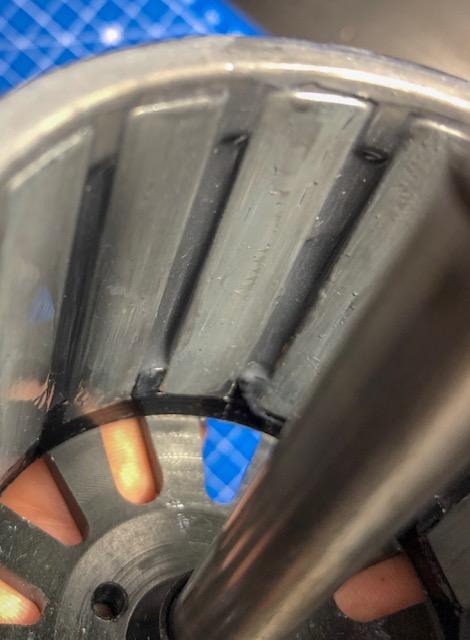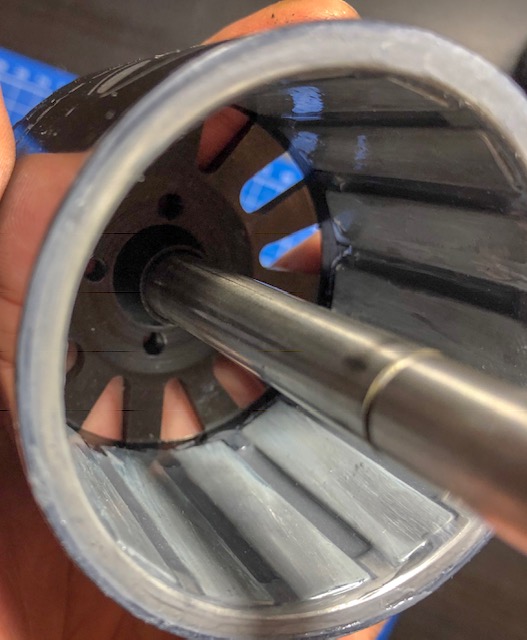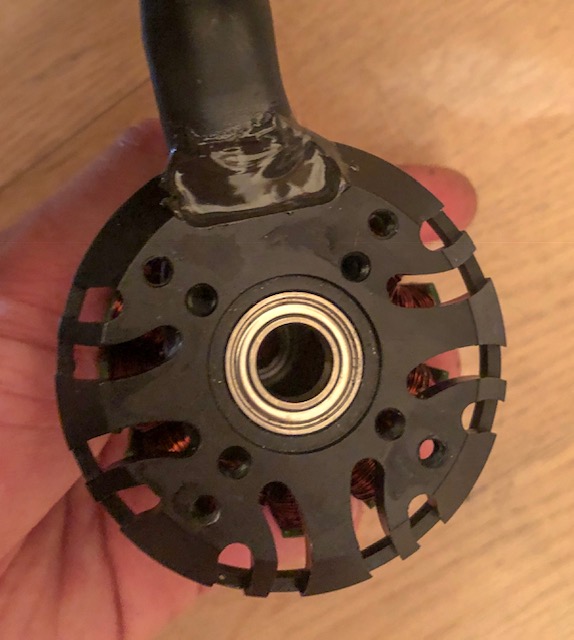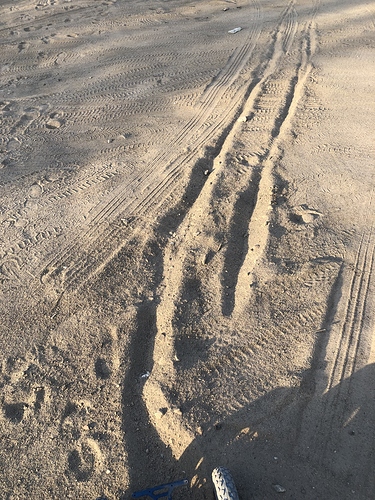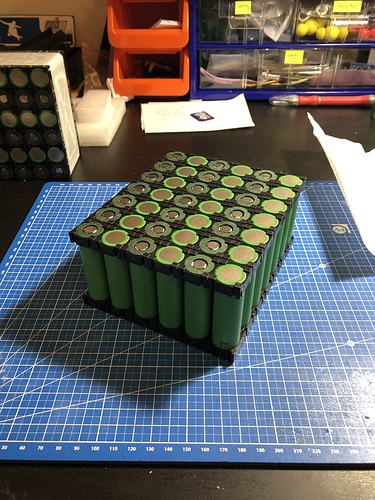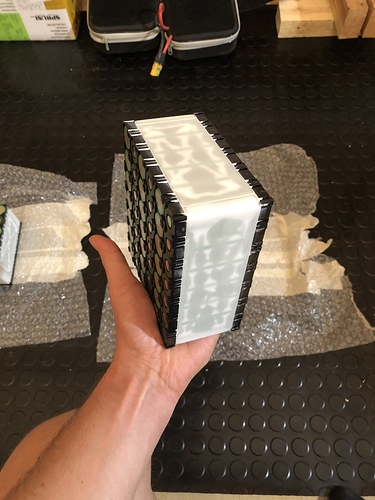After my quad MTB build I still had one Trampa holy pro 15ply deck laying around, so I decided it´s time to build a second e-MTB.
I really like my quad, but to be fair, with it´s 25kg it´s just huge and heavy and some kind of flexibilty while riding gets lost with it.
Goal for this build was to hold the weight down at 12-13kg (including battery). That´s a pretty good weight for a solid e-MTB and a perfect base for any kind of jump activity.
The build is still in progress, so some components will be changed during this year, but here the base of parts I used:
- Trampa holy pro 15ply (custom colored)
- Trampa Ultimate trucks with Etoxx Elastomer damper
- Trampa bindings with heel straps
- Trampa Superstar hubs with 8" wheels
- Motor mounts are from a forum member
- 3D printed HTD5M wheel pulleys
- 2x Focbox in 3D printed case and additional heat sink
- 2x ABS 6384 170kV
- DaveGA speed/voltmeter
- GT2B remote
- 2x Turnigy heavy duty 6s 5Ah 60C lipos
- Battery case is a GoPro case for now, will be changed to a 3D printed case as well.
Ok, so “light” should be clear now, but why “white”…Trampa decks are usually dark…
Because it´s custom painted. With automotive color.
Let´s get some pictures into this thread as well.
The overall weight for now is 13,6kg and with it still in the range I want to. I will change the steel crossbar (yes steel…I dindn´t have had something else to hand) against a carbon fiber one. I might also change the 6384 motors to a smaller size like 6355 or similar which should result in about 800g less weight.
The holes of the deck are covered with 3D printed covers as I first planed to use that deck with an underboard tray.
During building I realiued that it´s not going to be a street board anyway so there is no sense for this bóard to mount the battery below the deck.
During the winter I changed the wheels to a DIY studded wheels. For those who interested in it, I will update this thread with a small “how to” comment in future.
I also had massive problems with lose/broken magnets on APS motors. I fixed this issue by battle harden the bell of the motors with epoxy. I might write a small “how to” for this as well in future.
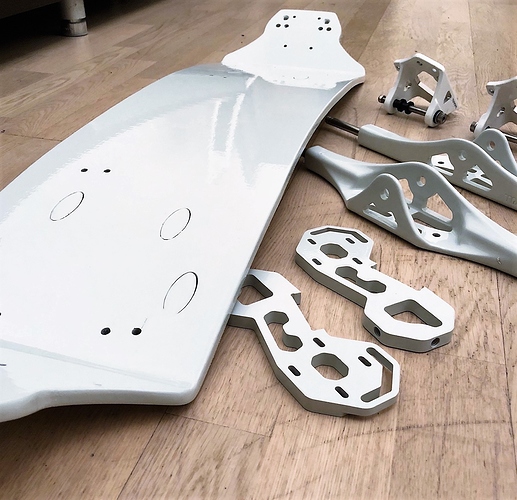
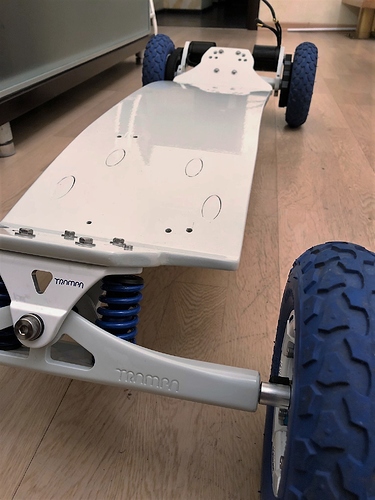
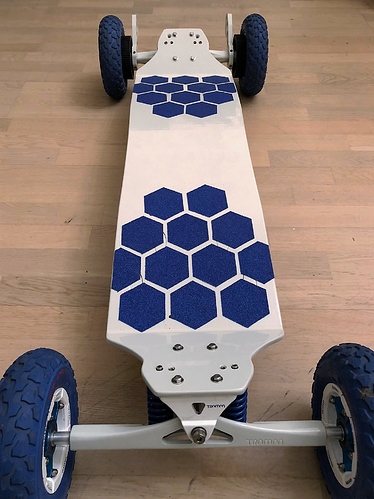
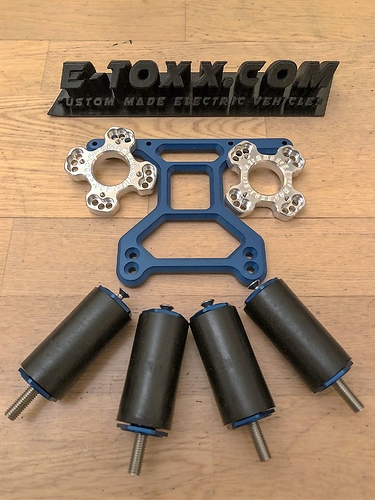
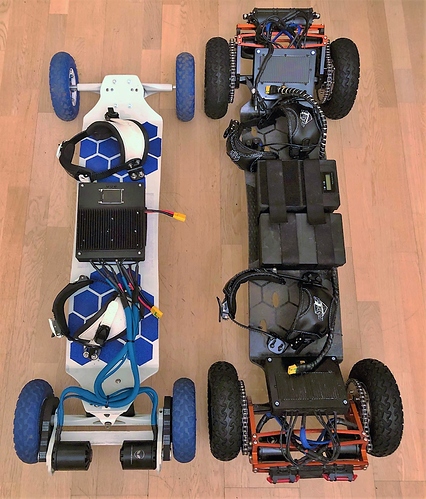

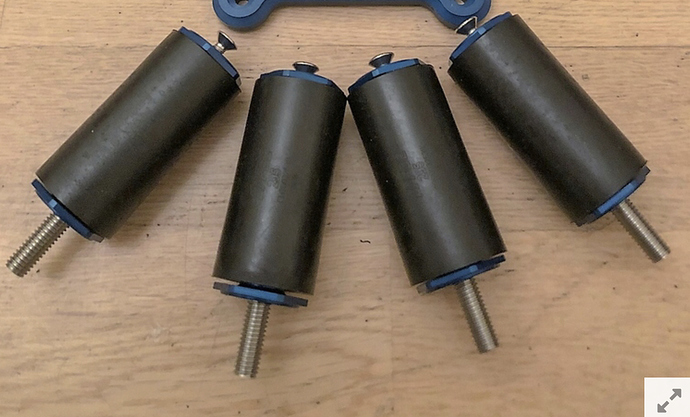
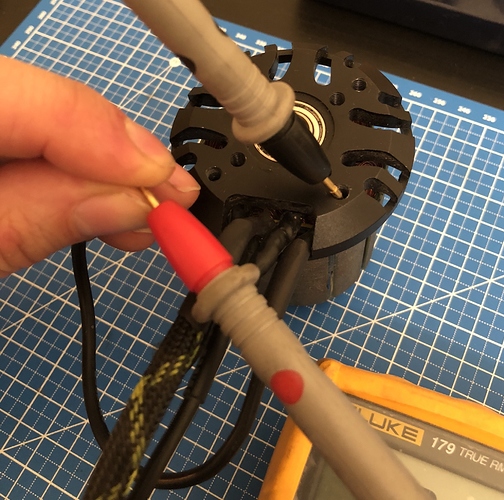
 )
)
